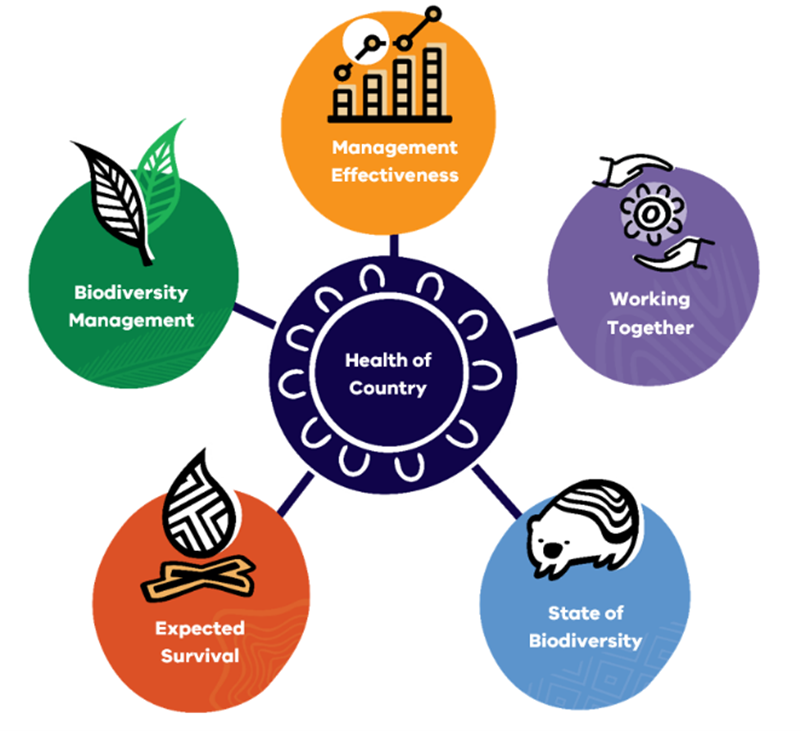Victoria is home to a diverse range of landscapes, habitats, species, and ecosystems across both land and water. Understanding where, how, and why changes are occurring in the natural environment provides the opportunity for ongoing improvements to policy interventions, management actions, and to support better biodiversity protection and outcomes.
The Biodiversity Indicator Framework (BIF) is DEECA’s new approach to biodiversity monitoring and reporting. Key themes underlie the structure of the BIF, with each theme addressing an important component necessary for understanding changes in biodiversity and the effects of efforts to manage Victoria’s native flora and fauna. In combination, these themes provide the structure for monitoring and reporting on biodiversity more comprehensively. Biodiversity indicators sit nested within themes and have been developed to provide an evidence-based understanding of the biodiversity patterns, trends, outputs, and changes occurring in Victoria.
The BIF aligns with the vision and goals of the Biodiversity 2037 strategy and the Global Biodiversity Framework. Importantly, the BIF acknowledges that there are two ways of knowing, both western and cultural and will remain flexible in how it reports on the Health of Country.

Structure of the Biodiversity Indicator Framework.
Artist: Matty Atkinson
The results from BIF reporting will be collated and made available on a periodic basis.
Indicator currency, accuracy and development will be reviewed regularly within available capabilities and capacities. This means new indicators will likely be included in the BIF as more data becomes available, or how indicators are reported may change due to advances in technology and methodology, data and/or research.
DEECA will continue to partner with Traditional Owners on approaches to reporting on biodiversity and Country, seeking alignment if and where appropriate. Approaches will remain flexible to meet the needs of individual Traditional Owner groups.
Page last updated: 06/06/24